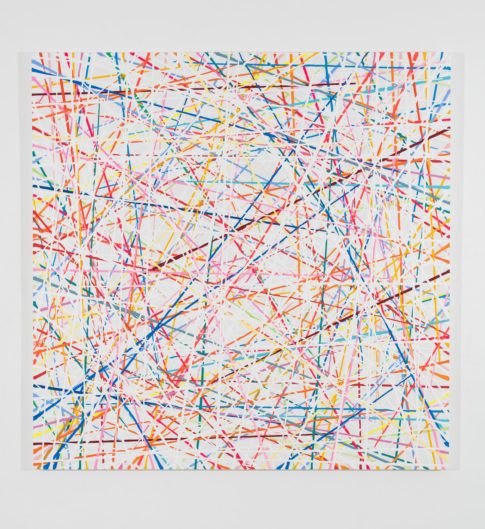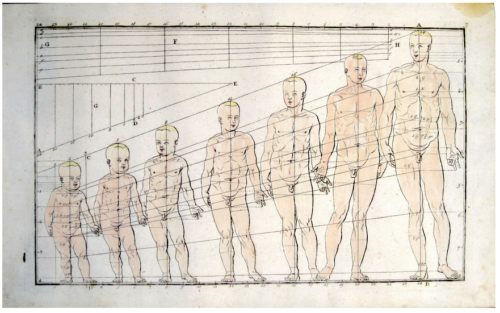
Aditya Novali
“In spite of First-World nationalism that imagines its subjects as immune to the threat of infectious disease, our post-postmodern, post-human, post-natural society nevertheless retains the structural paradigms of contagion and infection in discourses beyond biomedicine. We are strikingly not beyond contagion.”
Kari Nixon & Lorenzo Servitje (Endemic)
“This, I suspect, will be no radical transformation, no shift into a world ‘after nature’ or a
‘posthuman future.’Perhaps it will not even constitute an “event.” But I think, in all manner of small ways,most of which will soon be routinized and taken for granted, things will not be quite the same again.”
Nikolas Rose (The Politics of Life Itself)
“Pathology is considered as a means whereby the organism responds to, in other words adapts itself to, the conflict it is faced with, the disorder being at the same time a symptom and a cure.”
Franz Fanon (The Wretched of the Earth)
The idea of contagion, much like the idea of ‘going viral’ permeates western cultural logic and such ideas now cross pollinate each other, psychologically speaking. As Kari Nixon and Lorenzo Servitje note…“Epidemic discourse so thoroughly structures our world that it is endemic to our processes of social construction.” (Ibid)
In one sense, when reading the introduction to their book Endemic, I felt a certain epiphany when I came to the above sentence. It helped to fill in a certain missing part of what I had been experiencing vis a vis the Covid protocols. So much of the authoritarian top-down state reaction (sic) to the Covid virus story felt like something scripted for the screen. And its likely that all screens are partially Hollywood screens now. But not just in the sense that the lockdowns felt like a Hollywood disaster movie, but more that the very idea of 21st medicine was now inextricably tied to the various platforms of the internet. From social media to data harvesting to online tracking, et al.

Jeff Brouws, photography.
So ubiquitous are the metaphors and myths of AI, post humanism, transhumanism, et al. that they infuse daily discourse and pass barely noticed. And there is a quality of incoherence in a lot of this post humanist discourse, a kind of default setting for obfuscation. It is stunningly solipsistic. The loss of basic education has seeped upward to the institutions of higher learning, and laterally it was come to shape mass media and to shape even the delusions of the ruling class. It’s not as if Klaus Schwab is exactly a paradigm of lucid thinking, or of writing. The techno and cyber vocabulary now meets the language of World Banking. Bourgeois economics provides the structural underpinning for enormous amounts of political rhetoric, and increasingly of cultural expression.
“As Max Weber found an elective affinity between the Protestant ethic and the spirit of early capitalism, generating the forms of life that made foresight, prudence, calculation, and accumulation not just legitimate but potential indicators of salvation (Weber 1930), so there is an elective affinity between contemporary somatic ethics and the spirit of biocapitalism. Somatic ethics, that is to say, accords a particular moral virtue to the search for profit through the management of life. Yet, at the same time, it opens those who are seen to damage health in the name of profit to the most moralistic of condemnations.”
Nikolas Rose (Ibid)
This new incoherence is both intentional, and unintentional. The so called ‘Great Reset’ is operationally effective, and it is happening before our eyes, and yet it is also a testament to just how far basic logic has been eroded. There is a phenomena today akin to graphomania, only verbal. It is an interesting side bar that in 1979 Milan Kundera (Book of Laughter and Forgetting) wrote about graphomania, and listed what he saw as three preconditions for it.
“1) a high enough degree of general wellbeing to enable people to devote their energies to useless activities; (2) an advanced state of social atomisation and the resultant general feeling of the isolation of the individual; (3) a radical absence of significant social change in the internal development of the nation.”

Caetano de Almeida
I should add the conventional psychiatric definition of ‘graphomania’, from Dr. F.T. Hunter, in 1921:
“All writings which do not convey a positive fact, the result of observation or of experience, which do not bring forth an idea, which do not materialize an image – a personal artistic product – which do not reflect the interior life and the personality of the author, are in the domain of graphomania”.
(quoted by Mark D. Griffiths Ph.D., in his essay The Write Stuff)
But I digress. What is relevant here, though, is more what Kundera observed. Advanced social atomization and a radical absence of social change. Today, I might argue, at least in the U.S. (and likely much of Europe) there is a profound sense of repetitiveness to daily life. No matter one’s occupation, and quite possibly no matter one’s class. Certainly the repetitiveness of the high net worth one percent is of a different quality than that of an Uber driver. And yet, the experience of life is an experience of repetition.
I cannot defend this with an clinical studies, it’s only my sense of things. And it may be that the internet and the acceleration of cause and effect, even if illusory, that occurs with activities of research or on social media has contributed to a sense of sameness. There is also, of course, the increasingly empty rhetoric of world leaders, and local politicians alike. The oppressive familiarity of advertisements and marketing campaigns. What Debord labeled ‘the Spectacle’ is almost a machine for manufacturing the same. The emphasis on novelty is actually, now, its opposite. Nothing feels novel. And as language continues to be degraded (via all the things listed above) the subjective mimetic processes that help in the formation of our sense of self are atrophied.

Dr. Lakra
Now, Kari Nixon, in an interview about her new book Kept From All Contagion, noted that the late 19th century marked the emergence of germ theory. Of the idea of contagion existing in the majority of diseases. People knew of contagion, but had previously seen it as a rarity. Bubonic Plague was contagious, but the common cold was not. But this idea of germs coincided, as I have noted before, with optical inventions like the microscope and also with psychoanalysis. It was the discovery of an unseen world of threat. And this also marked the start of detective fiction. The idea of clues, previously unseen, that could yield valuable information. The unseen was suddenly something linked to science, to rationality, to technical advancements.
The discourse of those avatars for extreme wealth, like David Attenborough, himself quite wealthy, all are pitching the same product, really. The same techno future, the same kitsch pseudo spiritualism, and the same unintentional entitlement. Attenborough, or Ursula van der Leyen, Jean Claude Juncker, or Schwab himself cannot help themselves; they exude entitlement and privilege. Behind their eyes, in plain view though, is contempt for you and me. The Royal Houses of Europe, which still control banking and much of the Benelux business world are visible on NGO boards and EU appointments. These are the voices of clear racial and economic privilege, the same class superiority. Like the British royals, in particular, and the Vatican, the Royal houses of Europe have always tilted toward fascism. But back to this idea of contagion. Or more specifically, to the idea of health, of life even.

Edvard Munch
“The practice of medicine in most advanced industrialized countries has been colonized by, and reshaped by, the requirements of public or private insurance, their criteria for reimbursement, and in general their treatment of health and illness as merely another field for calculations of corporate profitability. In another sense, perhaps even more fundamental, medicine been reshaped by its intense capitalization.”
Nikolas Rose (Ibid)
Rose notes that medicine has undergone an epistemological change, if not an ontological one. This mirrors, in an odd way, the evolution of psychoanalysis. The search for a deep truth, for underlying causes or meaning has shifted, or flattened (as Rose puts it) to something resembling open ended systems of prediction, of computer modeling and risk management. The deep trauma Freud sought is replaced by surface adjustment. This is the capitalization aspect, too. Medicine resembles economics, but it also has changed the perspective of what sort of values one attributes to being human. Much like post modern theory in general, there is a privileging of the surface. Truth is in the service of algorithmic experiment. And always, looming over these open circuit systems is the goal of prediction. There is a control and domination aspect here, a securitization and optimization of result. The actual diagnostic gaze of the doctor has receded into near extinction.
That said, western medicine since the Enlightenment has always born the seeds of a predictive control ideal. This is, again, the dialectic of the Enlightenment. There has never been, in the West, a tradition of deep individual healing (well, there were some, but the practitioners were burnt at the stake).

Johann-Daniel-Preissler (anatomical prints, late 1600s)
The change though is tied into the computer and the screen. The surface, the fetishizing of systems that render the author, the creator fungible. Its more illusion, of course, but this is also where a libidinal cathexis has migrated — it is the extreme eroticizing of the absence of the erotic (and more on that below and the new marketing of asexuality, and celibacy). But let me return for a moment to the sense of contagion that is now both metaphor and biological diagnosis. Servitje and Nixon begin their book with this paragraph…
“Why Mass Shootings May Be Contagious, New Study Examines”; “Is there an Antidote to Emotional Contagion”; “Gaining Weight Is Socially Contagious—So Is Losing It.” In 2015, these headlines appeared alongside those pertaining to Ebola virus disease (EVD), West Nile virus, and the recently infamous “Giant Frozen Virus Still Infectious After 3000 Years.”
Lorenzo Servitje and Kari Nixon (Ibid)
One aspect of the Covid story has been, from the beginning, the overlap between metaphor, myth, and material conclusions.The lockdowns were authoritarian, driven by a clear recalibration of capitalism in crisis. But there was always the strange uncanny aspect that many instinctively embraced. It is also clear that increasingly populaces once frightened and obedient are now fed up, exhausted, and acutely skeptical. What percentage? This is impossible to know, or even guess at, and it depends largely on the specific character of each governments overreach.

Nicola Grassi (Apollo, early 1700s)
“Psychoanalysis began as a further advance of civilized (scientific) objectivity; to expose remnants of primitive participation, to eliminate them; studying the world of dreams, of primitive magic, of madness, but not participating in dreams or magic, or madness. But the outcome of psychoanalysis is the discovery that magic and madness are everywhere, and dreams is what we are made of. The goal cannot be the elimination of magical thinking, or madness; the goal can only be conscious magic, or conscious madness; conscious mastery of these fires. And dreaming while awake.”
Norman O. Brown (Love’s Body)
This paragraph by Brown is borrowed from Geza Roheim’s posthumously published work Magic and Schizophrenia. Its a small book, and long out of print. A few facsimile versions can be found but it is largely forgotten. I only mention this as yet more testimony to the enormous loses western culture is undergoing. And the now all but defunct act of reading. In any event, the Covid story has been a great stimulant to magical thinking. The masks, the social distancing, the new protocols for daily life, all of it is barely rational, and has very little to do with public health. This story very quickly became about other things.
“Let us return to the example of psychoanalysis: we repeat because we repress…Freud was never satisfied with such a negative schema, in which repetition is explained by amnesia. It is true that, from the beginning, repression was considered a positive power. However, he borrowed this positivity from the pleasure principle or from the reality principle: it was merely a derived positivity, one of opposition. The turning point of Freudianism appears in Beyond the Pleasure Principle: the death instinct is discovered, not in connection with the destructive tendencies, not in connection with aggressivity, but as a result of a direct consideration of repetition phenomena. Strangely, the death instinct serves as a positive, originary principle for repetition; this is its domain and its meaning.”
Gilles Deleuze (Difference and Repetition)

Ha Chong Hyun
The endless versions of repetition that are experienced online, or with computer work of any sort, are indeed now shaping our ways of thinking, and of feeling. And there is the necessary compulsive aspect to this driven repetition. And cyber activity is highly compulsive, as countless studies show. The interactions online are more and more about being online. Discussions are more and more about the technology on which these discussions are taking place. Social media is formatted to encourage negative emotion. It is also compulsive. But let me digress only slightly here. It is worth looking back at a trajectory that began with the film industry post WW2. The late forties saw huge increases in audiences going to film theatres. But with the advent of cable TV and video casettes, the late 70s began a trend toward staying at home. Television product could compete with box office. (HBO…Home Box Office). The studios (and again, as I’ve said before, the release of Star Wars the same week as Freidkin’s Sorcerer ) responded with more blockbusters (aka Star Wars). By 1986 or 87 the video cassette was more popular than films at theatres (the role of pornography in this has yet to be fully calculated but obviously its a huge factor). The point here is that the American narrative began to privilege the stay-at-home experience as actually more elite and exclusive. It was also sort of self designed.
“A thorough exploration of the fifth generation of audiences for the moving image must begin, if not center upon, the home computer screen as a point of initiation and primary engagement.”
Del Jacobs (The Aggregate Spectator)
It is interesting Jacobs quotes Robert Ray…“The art object no longer controls our reading of it.” This is penetration of customized technological manipulation of what is on screen. Of course, largely, it is the manipulation of the same. Repetition. As Jean Luc Godard said, somewhere, in conversation…“its all the same, just a little bit different.”

Rut Blees Luxemburg, photography. (El Mansour, Dakar, 2003)
The point here is that Jacobs is suggesting a sort of fifth generation (after WW2) of audience. The post millennial white bourgeoisie are screen afflicted and screen addicted. They have enculturated distance experience, and home/fortress as familiar personal narrative tropes.
“The virtual community abides, and as in The Truman Show, surveillance and exhibitionism are drained of their negative connotation and made acceptable in the new media landscape. Likewise, with music and home recording or editing programs we “re-mix” or “mash up” sounds to create new sensations. And a kind of “self-publishing” or “reimagining” co-exists with the ability to electronically share with and distribute to others. “
Del Jacobs (Ibid)
The fifth (and now sixth) generation are weened on screens. And this is the mostly white educated bourgeoisie. A disproportionately visible class that is, if not comfortable, at least familiar with the ubiquity of surveillance and tracking. And it is a generation that has inherited the idea, and the reality of home being a place of infinite screen potential. And contagion (compulsive repetition) is also familiar and a part of their cultural logic.
The rise of germ theory at the end of the 19th century produced a sense in the public of interconnectedness and interdependencies.
“In a world growing smaller by the decade with the railway, electric telegraph, and telephone, this sentiment of being constantly connected was accompanied by a conscious fear that this new proximity heightened the possibility of “catching” something. The widespread circulation of fictional and factual stories about germs and contagion in the then-emerging mass media (that Wald [ 2008 ] groups under the umbrella of “outbreak narratives”) equally increased the awareness (and likely the anxiety) about infectious endemic and epidemic diseases. While the popularity of these stories, like that of Typhoid Mary in the first decade of the twentieth century, reflected a growing “cultural preoccupation with contagion”.”
Ghislain Thibault (Needles and Bullets, Endemic)
The spread of stories mirroring the spread of disease. And the spread, contagion, of fear and anxiety.
“The logic of seeking elimination found its ultimate expression under the National Socialist regime during the Second World War. Imagining himself as the political incarnation of Koch, Adolf Hitler targeted specific ethnic groups in order to eliminate “the fermenting agent of all social decomposition” . By the mid-1930s, x-ray screening for TB in Germany was a high-priority intervention to identify infected individuals and initiate treatment and control measures including incarceration and sterilization.”
Claire Hooker, Chris Degeling, and Paul Mason (Dying a Natural Death, Endemic)

Susan Derges, photogram.
In other words, there are narratives applied to medical phenomenon. Especially to infectious diseases. In fact the very idea of disease is one of historical shaping, dependent on capitalization, racism, control, and class. Hooker, Degaling and Mason’s essay emphasizes the role of narrative framing. There is almost always an assumed, if not outright stated, need to protect the advanced West from the global south. White paternalism is a constant, too.
“By corollary, what “counts” as epidemic or endemic disease is defi ned by narrative. Many diseases that “emerge” as a threat turn out to be illnesses that developing-world populations have lived with and accommodated themselves to for some time. Swine flu was in existence among the pigs of Egypt for a long time before becoming part of a story of emerging risk (Dry and Leach 2010 ). Ebola itself, one of a range of hemorrhagic fevers, may be considered by many Africans as more endemic than epidemic, more “old” than “new.” Diseases may cross the definitional boundaries between endemic and epidemic again and again, in part dependent on the perspective of the storyteller, and of the point of the story.”
Hooker, Degaling, and Mason (Ibid)
It is worth noting that among the causes most often noted in these epidemic narratives are overcrowding, globalization of trade, and air travel. These are the targets, too, of the eugenics minded overpopulation voices like Attenborough and Prince Charles. But never mind, the issue is that the global south is always de-contextualized. The colonial echoes are deeply ingrained in western storytelling. Poverty and lack of access to healthcare are simply natural to the global south. In the same way capitalism is natural. Virulence and pathogenicity are political, in the sense that the Spanish Flu was caused most directly by WW1. It is useful to remember that here in lockdowned Norway, where only ten people can meet indoors, and where the May 17th parades were cancelled, there is massive troop mobilization in the north with thousands of US military personnel now staking out the areas for the new US submarine base to be built. This has not been in any way a part of the disease narrative.
“From the late nineteenth century, and escalating until the Second World War,‘hygiene’ came to be a personal and political imperative and mission, a noun which spawned ever-more adjectives which connected the bodily and the personal to larger governmental projects: sex hygiene, domestic hygiene, social hygiene, national hygiene, moral hygiene, tropical hygiene, maternal hygiene, racial hygiene, international hygiene and more. Hygiene was something which people could and did do to themselves and to each other: it was a practice. But it also had a significance greater than oneself. Victorian culture made ‘cleanliness’ into a subjectivity, a practice which shaped one’s soul.”
Alison Bashford (Imperial Hygiene)

Ferdinando Scianna, photography (Tunisia, 1969)
So here we arrive at the class divide, today. For the West, certainly for the United States, the working class seems to, as a majority I think, distrust if not completely reject the Covid narrative. The affluent and largely urban white populace, university educated, have embraced it. And it is the latter that are so visible in media and marketing.
“Signalling the constant need for purification from the ever-present contaminating threat over the border, however imagined, hygiene became a primary means of signification by which those borders were maintained, threats were specified, and internal weaknesses managed.”
Alison Bashford (Ibid)
Cutting across the revanchist colonial values and intolerance are the effects — the epistemological implications of life-on-screens. As Bashford notes, it is always edges, borders and peripheries that must be guarded. In the US it is the wrong offramp — the inner city third world, and such geo-psychological constructs are the currency of much covid discussion, too. Only the Covid narrative, while still Orientalist and racist in many parts, has travelled into the new-agey solipsistic post humanist gibberish that defines stuff like cancel culture and identity politics. The frontiers for infection are now arbitrary, and increasingly internal. The pandemic is a moral crusade, not a medical one. The vaccinated may not become protected from the virus but they are morally elevated by the shot. They are perhaps even spiritually improved. The virtue signalling in actions like mask wearing (my new favorite was a photo of Matt McConaughey on a rock bridge of sorts in the middle of the Mojave desert, with literally nobody and nothing in sight…wearing a mask) have taken on a kind of de-facto creation of moral frontiers, as it were. As an aside, Bashford’s very good book was written in 2003. Her recent interviews however find her adroitly side stepping any criticism of the lockdowns or authoritarian state response. The backdrop to this new moral crusade is, of course, The Great Reset. And that is way too far a step for most academics to take in terms of making connections, be they obvious or not.

Chang Hong Ahn
The repetitions of life connected by smart phone are very much the point in terms of the bourgeoisie.
“Death has nothing to do with a material model. On the contrary, the death instinct may be understood in relation to masks and costumes. Repetition is truly that which disguises itself in constituting itself, that which constitutes itself only by disguising itself. It is not underneath the masks, but is formed from one mask to another, as though from one distinctive point to another, from one privileged instant to another, with and within the variations. The masks do not hide anything except other masks. { } Take an uncovered or bare repetition
(repetition of the Same) such as an obsessional ceremony or a schizophrenic stereotype: the mechanical element in the repetition, the element of action apparently repeated, serves as a cover for a more profound repetition, which is played in another dimension, a secret verticality in which the roles and masks are furnished by the death instinct. Theatre of terror, Binswanger said of schizophrenia. There, the ‘never seen’ is not the contrary of the ‘already seen’: both signify the same thing, and are lived each in the other”
Gilles Deleuze (Ibid)
Deleuze adds a bit later…“I do not repeat because I repress. I repress because I repeat, I forget because I repeat.”

Hieronymus Brunschwig (apprx. 1500, device for elevating heads with cranial fractures)
This theatre of terror is now externalized and becomes policy, it becomes politics. Debord’s generalized autism carries with it aspects of the schizophrenic. The screen is the delivery system for this carry on. Repetition is not representation. It must be signified. And it is always masked. At least to the subject. There is no primary repression, there is repetition. There is not even a ‘presentation’, there is repetition. And there are re-presentations.
Deleuze suggests transference as the site of healing, (as well as the site or origin of sickness). But relevant here is his idea of transference being something akin to a science experiment. “There is indeed something analogous to scientific experimentation in transference, since the patient is supposed to repeat the whole of his disturbance in privileged, artificial conditions, taking the person of the analyst as ‘object’. In transference, however, repetition does not so much serve to identify events, persons and passions as to authenticate the roles and select the masks.” There is an erotic element to transference. It might well be THEE essential element. And here is what I want to single out. The evolution of the western psyche has been shaped by the ruling class, which itself is schizophrenic. Those (the underclass) who endure the machinery of psychological terror visited upon them — and this means in that screen habituated compulsive/repetitive assault, the extensions of which have deformed higher education, rendering the University something out of a high school production of Marat/Sade and destroyed creativity, are inexorably moving toward a state of absolute emptiness. The working class which no longer is allowed even toil, but which must subsist in ever narrower bloodless anodyne landscapes, rural and urban, which they had no part in creating, also exist in ever narrower psychological enclosures. There is only more of the same.
The Covid protocols have largely replicated the plague protocols of medieval Europe, without the unseemly bodies in the street and without those unattractive buboes. This is a pantomime pandemic. There are the echoes today, too, of the attempts in Great Britain, during the industrial revolution, to eradicate syphilis. The bourgeoisie has reduced sexual activity markedly over the last forty years. Teenagers watch sex, watch porn screens, but they less frequently go out and find erotic encounters. The morality is an exercise in contradiction now, with the virtues of celibacy until marriage voiced constantly on TV and in film, while at the same time, marriage is decried as the patriarchal capitalist institution it is, while also engaging in near constant sexual titillation. But the fantasy must be presented and sustained — an empty ritual. The fetishizing of all sexual orientation (replete with complex new vocabularies) has encouraged stuff like the ‘asexual’ movement. Now articles have appeared in The Guardian (of course) and The Atlantic, and elsewhere, with discussions about the rise of asexuality, and an insistence upon asexuals as legitimate and worthy of their own brand. I suspect this is PR or spin, all of it marketing, and I suspect its target is the haute bourgeoisie, but the intent is to stigmatize the working class. The elite are hygienic and pure — in presentation. (never mind those Jeffrey Epstein stories). The working class is dirty and sexually uncontrollable. Especially, of course, those with darker skin.

Francisca Sutil
Desire is a final battleground, then, in a sense.
One of the key aspects of Deleuze book on repetition (qua Freud) is the implications it has for computers and AI. And, for education as well, per the new push for ‘distance learning’. (I saw an add for a *summer camp for creative short story writing*. But it was online. This is insidious. Summer camp means going to a fucking camp, being in the presence of the artist, of art, or Nature, and all the eroticism associated with summer camps). Repetition is never really the repetition of the same.
“A bare, material repetition (repetition of the Same) appears only in the sense that another repetition is disguised within it, constituting it and constituting itself in disguising itself. Even in nature, isochronic rotations are only the outward appearance of a more profound movement, the revolving cycles are only abstractions: placed together, they reveal evolutionary cycles or spirals whose principle is a variable curve, and the trajectory of which has two dissymmetrical aspects, as though it had a right and a left. It is always in this gap, which should not be confused with the negative, that creatures weave their repetition and receive at the same time the gift of living and dying.”
Gilles Deleuze (Ibid)
This touches on why computer graphics are so ugly. Why computer images (and this includes CGI) repulse before they attract. It requires conditioning to yield to the computer graphic. There is an instinctive repulsion to the inorganic, and especially to the counterfeit organic ( much as synthetic meat repulses). It also relates to why computer modeling is often, if not usually, so wrong. Now people will argue that its not wrong, that computers have remarkably efficient predictions (this is the Game Theory problem, too). But behind the certainty is the spiritual uncertainty. And it begs the question of how to define a prediction as correct? Computer logic is always pathological. The computer graphic is always death. The correct prediction may not be known for ages.
The correct answer may not ever be known. The correct answer may stay hidden. The correct answer can be a secret. And this would raise an entire and long discussion of what exactly is a *question* ? There is an authority that creates a framework for correct or incorrect. Its not something outside history.

Oliver Richon, photography.
Teaching is always ritualistic. Bly once said all learning takes place in ritual space.
“Apprenticeship always gives rise to images of death, on the edges of the space it creates and with the help of the heterogeneity it engenders.”
Gilles Deleuze (Ibid)
There is no ritual space on screen. So called ‘distance learning’ is not learning. It is alienation.
“Anthropologists have long known that when a tribe of people lose the feeling that their way of life is worthwhile they may stop reproducing, or in large numbers simply lie down and die beside streams full of fish: food is not the primary nourishment of man, strange as that may sound to some ethological faddists. So seriously do we take the self-esteem since Adler, that for over a generation we have been working toward theories of disease based on self-esteem.”
Ernest Becker (The Birth and Death of Meaning)
“The repetition of dissymmetry is hidden within symmetrical ensembles or effects; a repetition of distinctive points underneath that of ordinary points; and everywhere the Other in the repetition of the Same. This is the secret, the most profound repetition: it alone provides the principle of the other one, the reason for the blockage of concepts. In this domain, as in Sartor Resartus, it is the masked, the disguised or the costumed which turns out to be the truth of the uncovered.”
Gilles Deleuze (Ibid)

Kristin Bedford, photography.
This is the truth of theatre. The actor is more himself the more he is his character. ‘In’ character. The sick society is now one that embraces its repetitive sameness. Go google ‘varieties of banana’. There are hundreds of varieties. How many do you get at the local market? One. Or apples, there are thousands of heirloom apples. Instead, one can choose from twenty or thirty different toothbrushes, all of them nearly identical. It is not a question of choice, but from what one can choose. Organic choice vs empty commodity choice. Western society enforces strict reductions of choice while advertising infinite variety. Choice today is which of three alternatives from the drop down box to click. And always the focus on the new, the novel, the innovative fashion for this season. I saw not too long ago, in a super market, sliced banana wrapped in plastic on a tray.
The three alternatives in the drop down box are all incorrect. At the bottom of the page will be a questionnaire; something like ‘did you find what you were looking for’? The answer is intentionally, overwhelmingly, no.
The final element worth mentioning here is that the ruling class, the high net worth 1 or 2 percent, have orchestrated a systematic plan (which is at least partly succeeding) to take away the last vestiges of humanness. The question is of course why, exactly? One could say, power, but that just kicks the can a bit further down the road. Why does one want power? I think the short answer is that it substitutes for desire.
“…although individuals like these had problems, what was “sick” was neither the one nor the other of the protagonists, but the relation that linked them. What I came to understand was that the crucial factor in that relation was each one’s desire—understood in the broad sense of psychological movement—a desire that is essentially mimetic.”
Jean-Michel Oughourlian (The Genesis of Desire)

Roser Bru
Destroying desire is a part of the program. And perhaps this began unintentionally, but the authority structure, the ruling proprietor class came to recognize the appeal of a castrated/neutered populace. Stay at home, eunuch, cover your face, and watch the screen.
The fear of women has increased, too, in the shadow of this. The hidden power of reproductive eros drove the same ruling elite to burn women in the 14th century for witchcraft, with Church assistance. Transference, per Deleuze, heals through heterogeneity.
“What is the force that, from the beginning of life, draws the child into reproducing what an adult says or does? This force of attraction, interest, and attention is so much a part of the fabric of humanity that it is taken for granted. A young child has no power to resist that attraction. To feel such attraction is the child’s very nature, to the degree that he or she is “normal.” A child lacking this capacity would be deprived of something basic to his humanity; he would become isolated, autistic.”
Jean-Michel Oughourlian (From Universal Mimesis to the Self Formed by Desire)
This is mimesis, (per Rene Girard) and it is the inexorable attraction and interest people feel for each other. The child learns by repeating what he or she hears. Imitating what he or she sees. Discipleship is the basis of learning. Without going into the long complex explanation of infant learning, the point of importance here is that infants, before the age of about 12 months (or often longer) will not immediately imitate the adult, will not stick out their tongue as the mother does. But they do imitate it later in a deferred or delayed mimesis.
“In the same experiments, Meltzoff and Moore obtained from their newborns a deferred imitation; that is, as they describe it in their paper, the baby’s reproduction of adult gestures (such as tongue protrusions) took place after the gesture enacted by the experimenter had vanished from its fi eld of view for delays up to 24 hours. For Piaget, deferred imitation came first and was a manifestation of the symbolic function, that is, of the possibility of representing to oneself information about objects that are absent. I am suggesting here, in agreement with Meltzoff and Moore, the opposite view: it is imitation, immediate and then increasingly deferred, that little by little, by its very process, constitutes representation, the symbolic function, and consciousness itself, with all its attributes.”
Jean-Michel Oughourlian (From Universal Mimesis to the Self Formed by Desire)

Alexandre Cabenel (Samson and Delilah, 1878)
Masking mothers or children is, obviously, a way to cripple humanness. And it is worth noting the pernicious influence of B.F.Skinner on ideas about both children and the formation of the self. It is perfectly unsurprising that Skinner was so influential. If he hadn’t existed Western capitalism would have had to invent him.
“Skinner claimed that the newborn was a social tabula rasa. One cannot quote from Skinner about how children first come to experience a sense of kinship with others, because in a sense, he does not think they ever do.
Even adults are described as reacting solely to behaviors and not the hearts and minds of other people. Human beings have exquisite contingency detectors, and that is all there is to it. To use Skinner’s phrase, human relations are largely a “matter of consequences,” by which he means that people are only important to psychic development insofar as they “shape” the child’s behavior by offering rewards and punishments as a consequence of the child’s behavior. In theory, a Skinner box would do just as well as a mother’s loving embrace and adoring gaze if the contingencies were programmed correctly. There is nothing special about other people—it is an unscientific fiction that we feel a sense of connection to the moving mounds of meat we see out there.”
Andrew N. Meltzoff (Infant Research; The Like-Me Framework)
One can hear the echoes of this logic in other fields. Its the sound of Ayn Rand and Hayak, of economists in general, of logical positivism, and anti depressants, and of Zuckerberg and Gates. There is a link between predictive algorithms and Skinner. And it also suggests a necessary critique and interrogation of science as myth. And clearly science has great positive importance, but it is not outside of the world, and it not outside the people involved, the *scientists*. The assault of government policy vis a vis Covid is an assault on the human. It is not surprising that there is such a cultural attraction to Robots, androids, zombies and the fantasy of runaway AI. For there is an intuition that one is living an ersatz version of this delusion. The billionaires, best represented by Bill Gates, are themselves delusional. Media chooses the *experts* it wants, those who will be in touch with that long ago discredited Skinner world view. But that logic remains, and has, in fact, grown, only under cover of various *new* disciplines. The Great Reset is the great escape from the human. It is a class coup, too, of course. For all but the very rich, what awaits is a global Skinner Box, or Operant Conditioning Chamber, to use its official title.
To donate to this blog, and to Aesthetic Resistance (on Soundcloud, here:https://soundcloud.com/aestheticresistance)
use the paypal button at the top of the page.

“And it is worth noting the pernicious influence of B.F. Skinner
On ideas about both children and the formation of the self.
It is perfectly unsurprising that Skinner was so influential.
If he hadn’t existed Western capitalism would have had to invent him.” – amen.
“The Great Reset is the great escape from the human. It is a class coup, too, of course. For all but the very rich, what awaits is a global Skinner Box, or Operant Conditioning Chamber, to use its official title.”
Wonderful observations John. I did my undergraduate education in psychology back in the early 1970’s when Skinner’s thought was still very much alive in the classroom. My gut reaction to Skinner was revulsion. I’ve always thought of Skinner and his adherents as modern day Torquemada’s in lab coats.
I dare say that with the application of enough “noxious stimuli” I too would breathlessly confess to my tormentors that I have engaged in sex with the devil – just as metaphorically have scores of hapless innocent “war on terror” detainees done in “admitting” their sins and their heresy while in the isolation and desolation of their own personal “American Psychological Association supervised” Skinner Boxes.
So many great observations here. Thanks! I cannot appreciate sustained and contextualized thought enough these days; the war on thinking has been dismally successful as people eagerly flee from what they were never comfortable with.
That the relational element of human interaction has become a frightening experience for too many has become apparent in the rapidity with which the global corporate techno-fascists have colonized it. I wonder if it’s also an extension of weaponizing Freudian thought as people have been told parents et. al. are the source of all that’s malign in one’s character. Ergo, just be born and live in a test tube environment and the problems will be solved. The observations you’ve invoked of the natural magnetism displayed by infants to imitate adults reminds me of the natural mechanisms involved in the body that are being suppressed in this new narrative proposed by scientism. It’s not simply the heart pumping the blood that distributes it throughout the body, for instance; electo-magnetic impulses pull it through the capillaries as well.
Relational negotiations become even more problematic because they must occur in real time and place, categories that trigger even more dis-ease. The effects of what happens when human communities submit to the substitution of the finely-knitted rituals associated with place and a living history with atomized existence can be observed by watching how certain holidays are now fetishized. Watch how people rush to the grocery stores to buy the holiday-appropriate foods not only for Thanksgiving and Christmas but for secular celebrations like Fourth of July and Labor Day, as if consuming the watermelon, sweet corn, and budweiser will bring a meaningful connection with the others doing the same. There’s that line in Hannah and Her Sisters “We all had a wonderful time” repeated by characters and the title card as if to make it more (or less?) true.
On this note I had my first haircut in 1 ½ years from a woman with indigenous ancestors who described her father’s life on the Navajo reservation as a “living hell.” I’m not dismissing this out of hand, but there seemed lurking beneath the story an imagined sense that there were other ways of being shaped into adulthood that were not miserable, as if there existed a gleaming (white) neighborhood where violence wasn’t inflicted onto children emotionally, psychologically and physically. When she pointed out how intergenerational interaction was a component of reservation life, I observed that often abused young children (such as myself) had a better chance of finding some supportive adult in an environment where extended family were available than in a deracinated nuclear family.
That her 13 year old daughter was at home, alone and out sick from school recovering from her first covid injection, seems to suggest the plan to keep us separate and afraid is working.
om Renne’s delusions of screen total topology. More to the
point, while the advanced technological societies have
been spared the worst of this modern plague, the suppressed
historically colonized have 18th. century Paris conditions to face.
Concluding, not all Mathematics is shallowly instrumentalist, behaviorist -oriented,
or game-theorist. It, too, is a source of Surprise, and a sharp cutting tool of
the Gods.
Education Illumination and True Revolution
We must develop a passionate desire to liberate
us from these bullies. Better to die fighting than
to become a chained slave. A few excellent articles
also appeared in cp this weekend, to mention 2, consider
H. Girous “Against Educational Pedagogy of Apartheid…”, and
John Stanton’s ” The Hell of the Same: Capitalism Breaks
Down and Homogenizes Life, Disconnects Past, Present, and
Future.” Paul Street was dead on the sleepy joe and
his caring affectations. I, too, must express for John’s
thought creating drama-infused language.
Regino